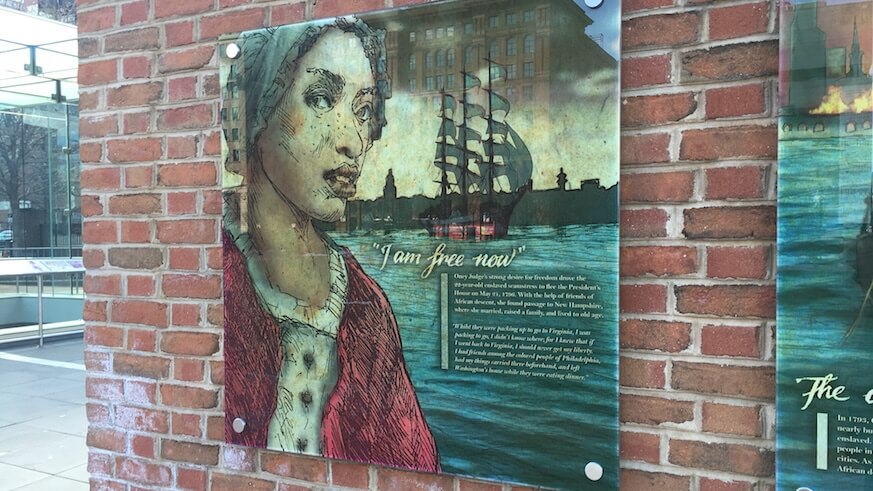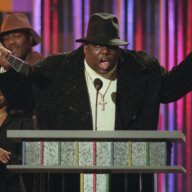Ona Maria Judge Staines died in 1848 at the age of 75 a free woman. But her claim to fame – being the woman who, in her 20s, escaped the house of President George Washington, where she was his slave – was almost unknown during her own lifetime. That’s because the story was untold until the 1840s, and the risk of being hunted down and caught by slave hunters was a reality well into the 19th century.
“She was one of the enslaved. Especially for me as a black woman, born and raised in Philadelphia, the fact that she escaped is so inspiring,” said Gina Gilliam, a park ranger at Independence Historic National Park (IHNP). “For young people, it shows anybody can do anything, at whatever age. She did it on her own, she was brave.”
Known historically as Oney Judge, Oney was born into slavery in Mt. Vernon, and was kept as a domestic house slave to Washington’s wife. In 1789, around age 16, she was brought to Philadelphia with Washington’s household as he took on the first presidency, at 6th and Market streets in Old City. Oney’s escape is memorialized in the symbolic path of footsteps laid in concrete right outside the President’ House museum in Old City.
“We want more people to know about it,” Gilliam said. “This is all national history, but it happened right here. They walk by here, but probably don’t even know what happened here.”
Washington repeatedly stated after the first decade of the United States’ existence that slavery as institution should be ended, but said it was the Legislature’s responsibility.
“To set them [slaves] afloat at once would, I really believe, be productive of much inconvenience & mischief,” he wrote in a 1786 letter to his close friend and confidant, the Marquise de Lafayette, “but by degrees it certainly might, & assuredly ought to be effected & that too by Legislative authority.”
But his treatment of Oney showed another side of his character. Since Pennsylvania had passed a 1780 Act for the Gradual Abolition of Slavery, slaves who established residency in Pennsylvania after living there for six months would become free. So the Washingtons rotated their slaves back to their home in Mount Vernon, Virginia every six months to prevent them from obtaining their freedom.
In 1796, after Martha Washington informed her she would be given as a wedding president to Washington’s granddaughter, she decided to flee.
“She couldn’t imagine being given as a present,” said Coxey Toogood, a historian at IHNP. “In the letters back and forth in 1796-97, she said she ‘loves’ them but she’d only go back if she could be free after their death.”
As Oney put it in an 1845 interview, “I knew that if I went back to Virginia, I should never get my liberty. I had friends among the colored people of Philadelphia, had my things carried there beforehand, and left Washington’s house while they were eating dinner.”
Washington was so incensed by Oney’s escape that he put ads in local newspapers offering a $10 reward for her discovery and return.
Oney taught herself how to read and write and became a Christian while living as a free woman in the small town of Greenland, New Hampshire, where she married a free black sailor. But her life was still cloaked in secrecy over fears that she could face a recapture-attempt. Even her children could have been subject to ownership by the Washington family as slaves.
And life was still hard up north: in 1803, her husband died. Facing economic difficulties, Oney hired out her two daughters as indentured servants. Both later died of the flu. Her son went to sea as an apprentice sailor, never returned and was presumed dead. So no descendants of Oney’s are believed to currently survive.
But her story continues to inspire generations of Americans.
“She had it better than most slaves at that time, and people couldn’t understand why she wanted to run away,” Gilliam said. “Imagine how that is for the average enslaved person. She probably had the best of the best … but she still wanted to run away.”
Visit the Oney Judge exhibit at the President’s House at 6th and Market streets, at Independence Historic National Park. For more information, visit nps.gov/inde.





























